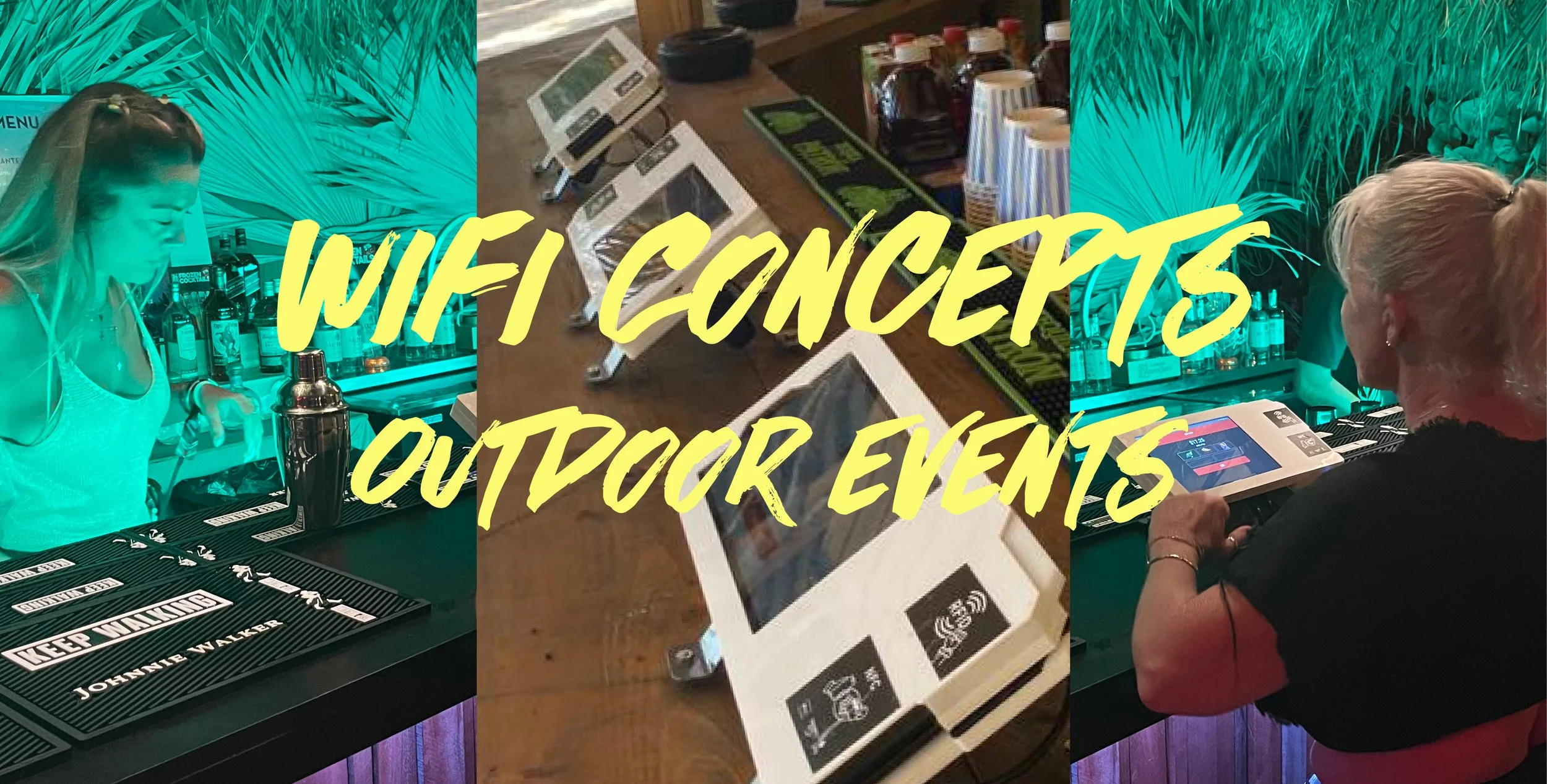WiFi Concepts for Event Point of Sale
Establishing a stable WiFi connection at outdoor events takes careful planning, and is quite different than a typical indoor deployment. Outdoor venues pose issues like massive interference, physical obstructions, environmental considerations and a backhaul that may be borrowed or temporarily deployed as well, so there is a lot to consider. Credit card transactions on a network are arguably the most important data packets at an event, so feeling confident that your network is going to be stable and reliable is extremely important.
I often tell people that I’m not a network engineer, but I know enough to be dangerous. The truth is that I’ve been around enough RF engineers and network architects to effectively repeat vocabulary words I’ve picked up at the right time and place, such as “channel shaping” or ”ip scheme” or “gain levels” or “RF Interference” or “megabits”. These are all important words when referenced correctly, but when you understand them at their core, common sense and a more pedestrian vernacular will suffice. Vocabulary aside, an RF environment at an event is chaotic. The thousands of mobile devices that are brought in by the patrons are all fighting to get, and hold onto a cellular or data connection. The networks the vendors use at an event are super important and they need to be as stable as they can possibly be. They are all competing for the same space, but there are ways to cut through the noise and have a network you can count on.
There are many schools of thought around how things should be done, but I’ve seen two consistent things that make all the difference; 1.) gain down the radios; and 2.) get close to your access points with the devices. A 30-foot radius around an AP that has its gain set to -12dB seems to be the sweet spot. Networks with a single SSID can work, but the APs should be far enough away to not overlap. However, if they do, separate channels are a must.
I always say that two things are going to happen at a music festival: it's going to rain and the network is going to go down. …sometimes both at the same time. More often than not, and especially if the storm that passes through is strong enough, the network will be non-existent on the other side of it and could take some time to come back. Power is usually the culprit, so it’s one of the biggest reasons why I love that we run our POS terminals on batteries. Not having to worry about power during the show has been a game-changer.
Want to see how we can help WITH YOUR OUTDOOR EVENT?
Talk to a RoninPOS rep to learn more about our system.



